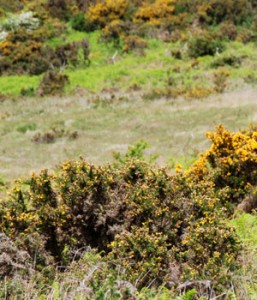Heathlands

Heathland is a threatened habitat. Over the last two hundred years, the U.K. has lost some 150,000 hectares of heathland. There is now only 58,000 ha of heathland left in the U.K; this represents one fifth of the world's total. Areas of heathland can be found in the High Weald of Kent (Ashdown Forest) and the Breckland of East Anglia. Breckland is a particular type of heathland, being a dry heath. The average annual rainfall is only 600 mm or so and it experiences hot summers and cold winters, together with frequent frosts. Another phenomenon of the region is wind-blown sand - which is unusual. Flint was mined in this area in pre-historic times as evidenced by the workings at Grimes Graves.
Other areas of heathland are to be found in Dorset and the Sandlings Heaths occur along the Suffolk coast; where mediaeval rabbit warrens can be found. Details of the NVC classification of Heaths and Mires can be accessed here.
Heathland has been lost for a variety of reasons
- the abandonment of traditional management practices, specifically the culling or grazing of bracken. The lack of grazing has allowed trees and shrubs to invade and grow (for example, Rhododendron) and for bracken to establish itself over wide areas to the exclusion of many other species. Grazing by sheep or cattle creates areas of bare ground and plants of varying heights - therefore creating heterogeneity within the habitat. After the last Ice Age, heathland would have been grazed by aurochs (type of wild cattle), deer, bison and wild horses. As forest and woodlands were cleared by the early settlers so there were opportunities for the development of heathland.
- 'modern' forestry practices, such as the creation of plantations of evenly aged, coniferous trees. These often have narrow rides or tracks and few open spaces. The understory in such woodland is species poor.
- Fragmentation of the habitat. If an area is broken up by roadways, or tree planting then heathland sites can become too small to manage / maintain effectively and / or they cannot support viable populations of heathland species - leading to local extinctions.
 Heathland can be varied in terms of habitats and biodiversity. It is in fact a mosaic, which may include
Heathland can be varied in terms of habitats and biodiversity. It is in fact a mosaic, which may include
- scrub of gorse, birch and willow
- open heath
- wet heath
- bog
- bare sand / gravel
It is also rich in terms of plant species (heather aka 'ling', cross-leaved heath, sundew, bog asphodel, marsh gentian) and animals (reptiles such as adders & slow worms, amphibians, dragonflies, rare butterflies, sand wasps, birds such as the woodlark).
Comments are closed for this post.
